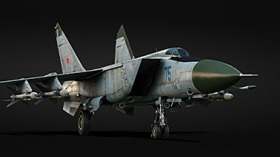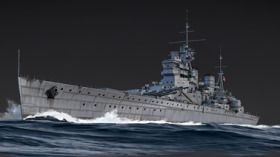
- For PC
- For MAC
- For Linux
- OS: Windows 10 (64 bit)
- Processor: Dual-Core 2.2 GHz
- Memory: 4GB
- Video Card: DirectX 11 level video card: AMD Radeon 77XX / NVIDIA GeForce GTX 660. The minimum supported resolution for the game is 720p.
- Network: Broadband Internet connection
- Hard Drive: 23.1 GB (Minimal client)
- OS: Windows 10/11 (64 bit)
- Processor: Intel Core i5 or Ryzen 5 3600 and better
- Memory: 16 GB and more
- Video Card: DirectX 11 level video card or higher and drivers: Nvidia GeForce 1060 and higher, Radeon RX 570 and higher
- Network: Broadband Internet connection
- Hard Drive: 75.9 GB (Full client)
- OS: Mac OS Big Sur 11.0 or newer
- Processor: Core i5, minimum 2.2GHz (Intel Xeon is not supported)
- Memory: 6 GB
- Video Card: Intel Iris Pro 5200 (Mac), or analog from AMD/Nvidia for Mac. Minimum supported resolution for the game is 720p with Metal support.
- Network: Broadband Internet connection
- Hard Drive: 22.1 GB (Minimal client)
- OS: Mac OS Big Sur 11.0 or newer
- Processor: Core i7 (Intel Xeon is not supported)
- Memory: 8 GB
- Video Card: Radeon Vega II or higher with Metal support.
- Network: Broadband Internet connection
- Hard Drive: 62.2 GB (Full client)
- OS: Most modern 64bit Linux distributions
- Processor: Dual-Core 2.4 GHz
- Memory: 4 GB
- Video Card: NVIDIA 660 with latest proprietary drivers (not older than 6 months) / similar AMD with latest proprietary drivers (not older than 6 months; the minimum supported resolution for the game is 720p) with Vulkan support.
- Network: Broadband Internet connection
- Hard Drive: 22.1 GB (Minimal client)
- OS: Ubuntu 20.04 64bit
- Processor: Intel Core i7
- Memory: 16 GB
- Video Card: NVIDIA 1060 with latest proprietary drivers (not older than 6 months) / similar AMD (Radeon RX 570) with latest proprietary drivers (not older than 6 months) with Vulkan support.
- Network: Broadband Internet connection
- Hard Drive: 62.2 GB (Full client)
In this devblog post, we would like to discuss some of improvements to the aircraft damage model that await you in the upcoming updates. These changes will be gradually introduced into the game during the development process of this new system so that we can gather as much feedback as possible.
We've done a great deal of work on damage types. We have moved to a more detailed mechanic for processing aircraft damage depending on the damage type: fire and incendiary shells, armour-piercing shells, HE fragmentation shells and collisions, all of these will have entirely different effects on the various parts of an aircraft's structure. Armour-piercing shells will no longer have a significant effect on larger elements of the structure such as the wing and fuselage, but will become effective against internal modules like longerons (Stringers or stiffeners), fuel tanks and cooling systems. Fragmentation shells will tear wing and fuselage skin with a high likelihood of ripping off various parts of the airframe, but it will be harder to damage internal modules with them without a direct hit, as the designers have hidden those modules within the aircraft structure, covering them with longerons, stringers, wing ribs or armour plates.
The main difference is the complete separation of the damage type and the consequences it can cause. For example, an armour-piercing shell will almost always cause nothing but a leak in the fuel tank, while an incendiary shell will most likely cause a fire or even an explosion.
|
Armour-piercing ammunition |
Incendiary ammunition |
We have paid particular attention to high-calibre shells: a hit from a high-calibre armour-piercing round on a longeron does not bode well for the targeted aircraft, just like a hit from an incendiary round will on the wing. But here too, we had to implement some changes in contrast to the previous system – the Wellington geodesic structuring for example will show its worth, just like aircraft with multiple longerons in the wing.
In terms of fire, its effect on different material types will be very noticeable. It's no secret that phenol-impregnated wood, duraluminum, fibreboard and all other materials have different resistances to fire. Although the end result may be the same, the time these materials take to reach that state can vary phenomenally.
Regarding this new system's advantages, the most important thing about it is that it's a big step toward making the damage system much more clear and transparent – making it so that every shell and every bullet poses a very specific threat and has a predictable result.
Please, leave your comments on the forum and thanks for reading!



